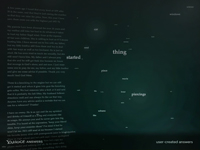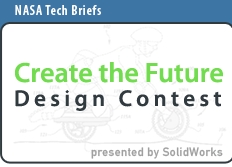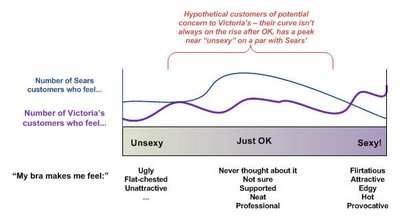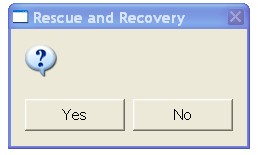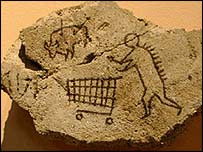Another book recommendation:
Scott Berkun's new
Myths of Innovation. I'm a big fan of Scott's earlier book,
Art of Project Management, and his new one does not disappoint. I think it stands apart from other books by consultants and design agencies on building innovative organizations. (They're now a dime a dozen.) It's short but still condenses a huge amount of material from both business lit and historical research in a way that even someone who once wrote a dissertation can be amazed at. (Note: I was not as successful as Scott was at this trick.)
One of my favorite parts is on the myth that "good ideas are hard to find." Why, no, they're not, but execution is hard. Which segues nicely to his other book; in my experience, a lot of organizations have grand product plans and grand business goals, but execute very, very poorly. The customer only ever sees a fraction of it, and often the worst fraction.
Some of the sentiments that kill good ideas before they even get to fail by execution include: "We don't have time," "That never works," "We don't do that here," "We tried that already," "That won't make enough money." A longer list lives here on Scott's Blog. I'd add the question: "Who are you, again?" Or the related, "You're here to listen, not talk" (which I've actually heard).
The issue of time is the biggie, from what I've seen in my past few companies. The execs may be reading books about innovation (for whatever reason), but at the operational level, everyone is signed up for way too much work. They can't succeed at what they've agreed to do, but they're trying anyway. Why would anyone want to sign up for more, regardless of how cool the idea is?
I have the same feeling about brainstorming; as a concept it's all warm fuzzies, considered obviously valuable, although it's often poorly or incorrectly executed (as Scott points out). In practice, though, not everyone's ideas ARE considered equivalent, precisely because of this economy of time available to the participants; given a small, finite amount of time to think and make decisions, why pay attention to the crazy sounding new kid's idea, instead of the seasoned manager who deserves to get his say because he's proved himself, right? In a more applied, problem-solution context, the more seasoned people are assumed to "know the code" or "know the users" better and therefore their opinions are worth more. It's been said out loud. It's basic human sense, right? And the less time people have, the less they're willing to extend themselves to be open.
Successful innovation might require fewer over-ambitious projects, acceptable risk and play (meaning: someone isn't working on your critical shipping "normal" work and that's okay, and not overtime work for them), plus a commitment to try to listen to all voices differently, no matter what the problem is: new product, new feature, or old ordinary problem you have to solve on an ordinary project. I'll come down strongly in favor of that last -- I think innovation can happen on "old" projects, too, and it should, to keep them viable and interesting to developers and customers.
But good project management is always needed to help you actually plan and then ship something! It's still innovation once it's in the development phase, even if it feels like just "work" then. The team needs to be supported, rather than having their work taken for granted as "a done deal" while managers go off looking for the next big idea.
I can't find it now, but one of my favorite lines from Myths of Innovation goes something like, "Successful ideas, like happy pets, are shared among many people who care about them deeply." Pet them, sometimes.

 There was a sweet little animation of people getting on a plane, and a diploma for people who finish the notebook (I filled in my name, yes). At the end, I looked at the page source, hoping to find something suggesting who created it, and discovered that they had even tailored the error message for people with the wrong browser support:
There was a sweet little animation of people getting on a plane, and a diploma for people who finish the notebook (I filled in my name, yes). At the end, I looked at the page source, hoping to find something suggesting who created it, and discovered that they had even tailored the error message for people with the wrong browser support:







